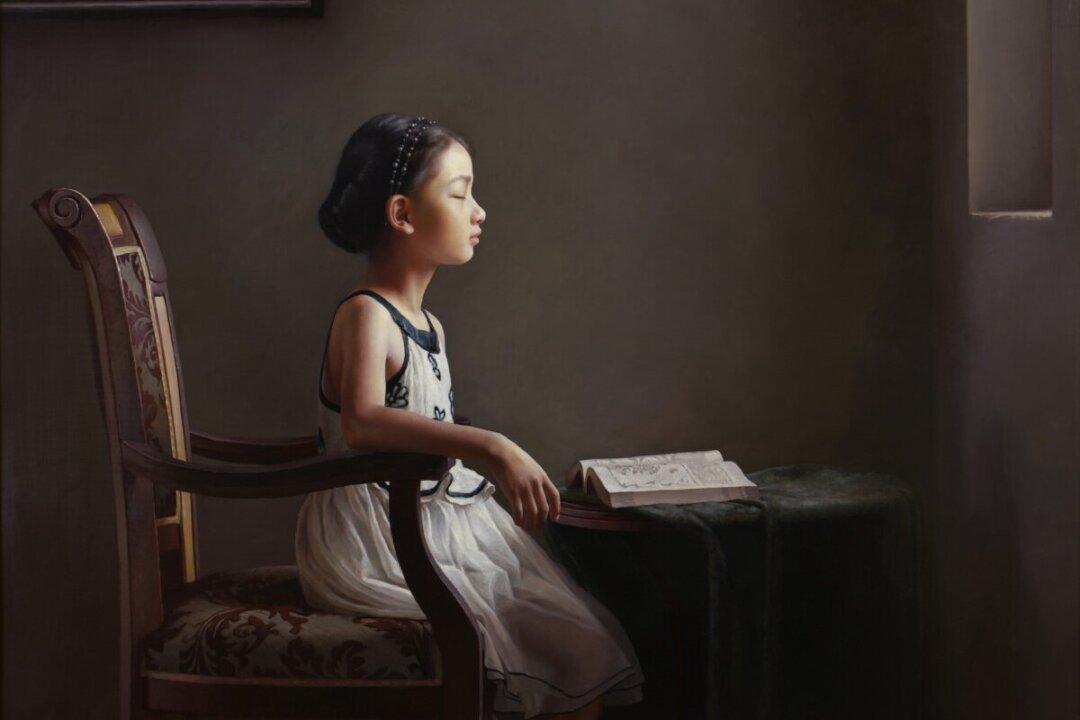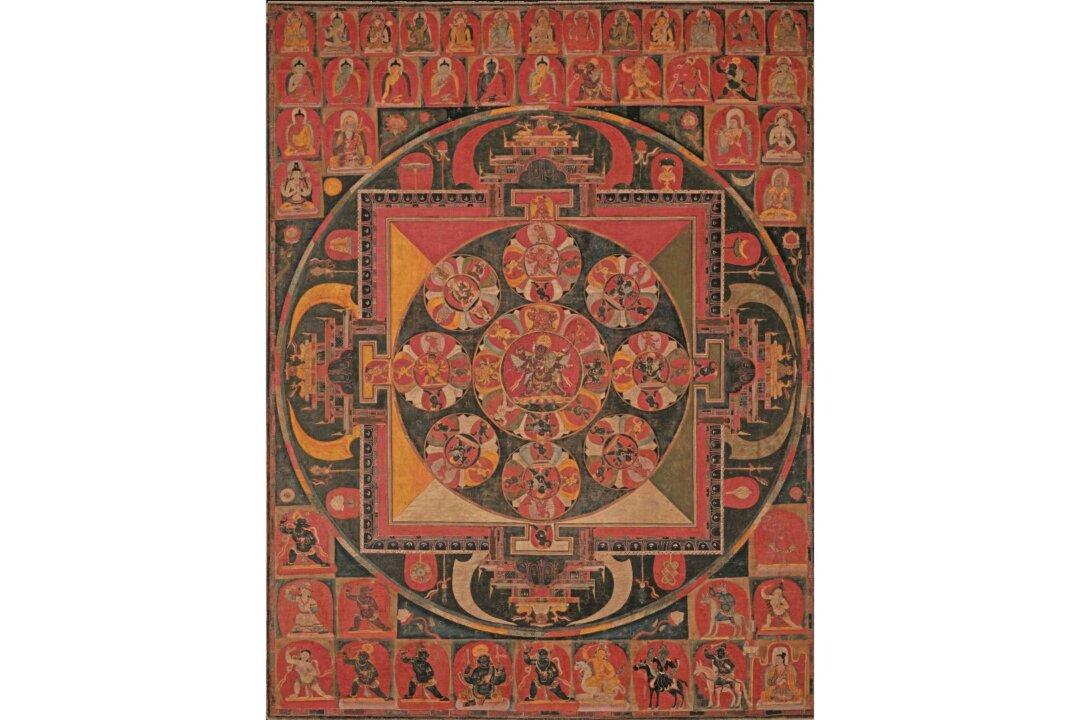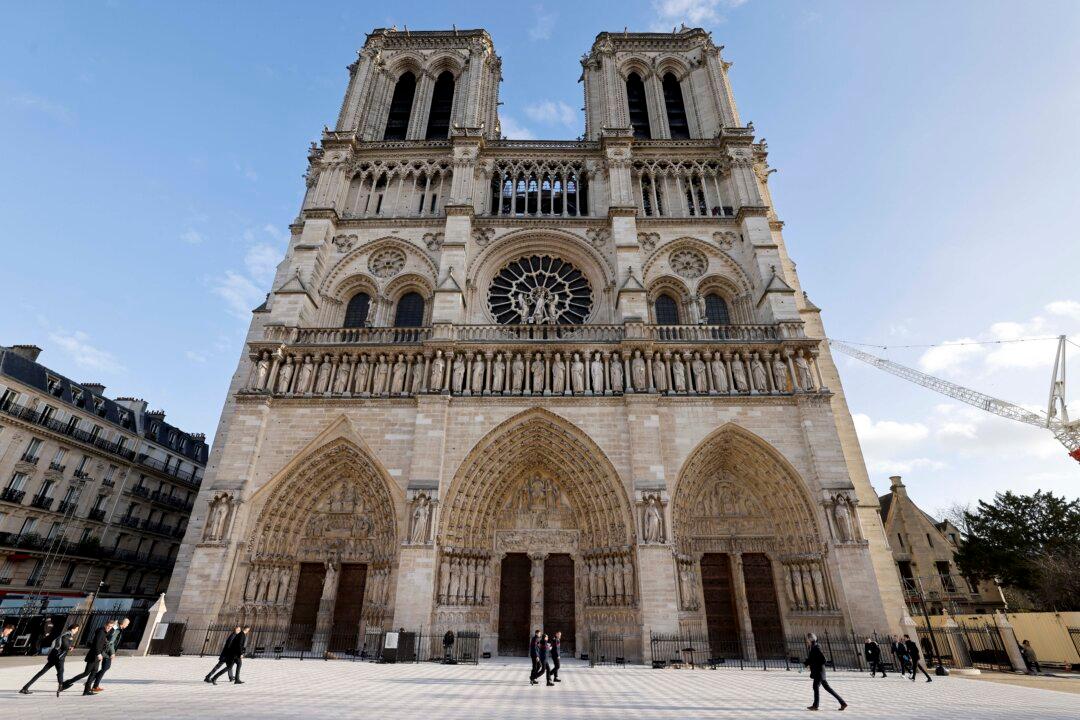Japanese painter Kazuo Torigoe creates incredible oil paintings on copper that make you wonder what in the painting is real.
On Torigoe’s website, lilies and hydrangeas seem to outgrow their frames. Luscious plums, apples, and two halves of a ripe fig look so appetizing that they make your mouth water.
Some of his paintings contain carefully arranged playing cards, candles, and beetles, creating small allegorical worlds.
Torigoe’s painting “XIV III MMXIX‘‘ combines many of these elements, but all in one frame. It’s a fantastical painting that won him the Best Trompe L’oeil Award at the 14th International ARC Salon (2019–2020).

"XIV III MMXIX ," 2019, by Kazuo Torigoe. Oil on copper; 16 3/4 inches by 10 1/2 inches. Recipient of the Best Trompe L'oeil Award at the 14th International ARC Salon (2019–2020). Courtesy of the Art Renewal Center
Delightful Illusions
Trompe l’oeil, French for “deceives the eye,” is an artistic technique whereby objects appear real on a two-dimensional surface. The technique has been used for centuries in painting, architecture, and the decorative arts to delight and astonish viewers, sometimes with comedic effect.According to Pliny, two painters in the late fifth century, Zeuxis and Parrhasius, competed to create the most realistic painting. Zeuxis rendered grapes so realistically that birds came to eat them. Zeuxis turned to Parrhasius and asked him to reveal his painting, which he believed was concealed behind a curtain. But Zeuxis had been fooled, for the curtain was Parrhasius’s painting!
And according to the Renaissance art historian Giorgio Vasari, in the 13th century an Italian boy painted a fly on the nose of a figure that his master, the renowned painter Cimabue, had painted. The fly was so lifelike that when Cimabue came back to finish the painting, he kept trying to brush the fly away. The talented boy was Giotto, who became one of the most celebrated painters of the early Renaissance.
Kazuo Torigoe’s Award-Winning Trompe L'oeil
In Torigoe’s painting “XIV III MMXIX,” an antique wooden altarpiece contains small compartments packed with different curios, reminiscent of a gentleman’s cabinet from the days of the 18th- and 19th-century European Grand Tour. There are glass test tubes with insect specimens; exotic shells and crystals from seemingly faraway lands; and three small corked bottles containing blue-, green-, and peach-colored minerals, to name a few items.
"XIV III MMXIX ," 2019, by Kazuo Torigoe. Oil on copper; 16 3/4 inches by 10 1/2 inches. Recipient of the Best Trompe L'oeil Award at the 14th International ARC Salon (2019–2020). Courtesy of the Art Renewal Center
In many ways, art and reality overlap in Torigoe’s painting. In a video of his artist statement, he says that he purified lapis lazuli to create ultramarine blue paint, and he finely crushed malachite to create green paint. Artists traditionally used these minerals in the past, and it appears that Torigoe depicted both at the bottom-left of the painting in the two small corked bottles. In addition, the frame is an altarpiece. It’s real, not a painted illusion. It’s an antique wooden altarpiece that Torigoe carefully restored.
To create his trompe l’oeil paintings, Torigoe first paints the illusion (in this case, the cabinet compartments) onto a copper plate. He favors copper for its relative stability and rigidity. Oil painting on copper was popular in parts of Europe in the 16th and 17th centuries, he says.
Torigoe then creates shadows in the painting that appear to be cast from the altarpiece frame. Connecting the composition and the frame gives the illusion of objects jumping into the viewer’s orbit. In theater, they call this “breaking the fourth wall,” where the action enters the audience space.
Torigoe hopes that when you view his paintings, you see them “as a homage to classical expressions and the materials once used.”
To see more of Kazuo Torigoe’s art, visit KazuoTorigoe.com






